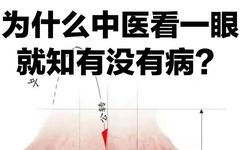Connecting the tongue closely with diseases and judging the internal health conditions through the different appearances of the tongue is a unique diagnostic method in Traditional Chinese Medicine (TCM). The emphasis on tongue observation in TCM stems from the relationship between the tongue and the internal organs.
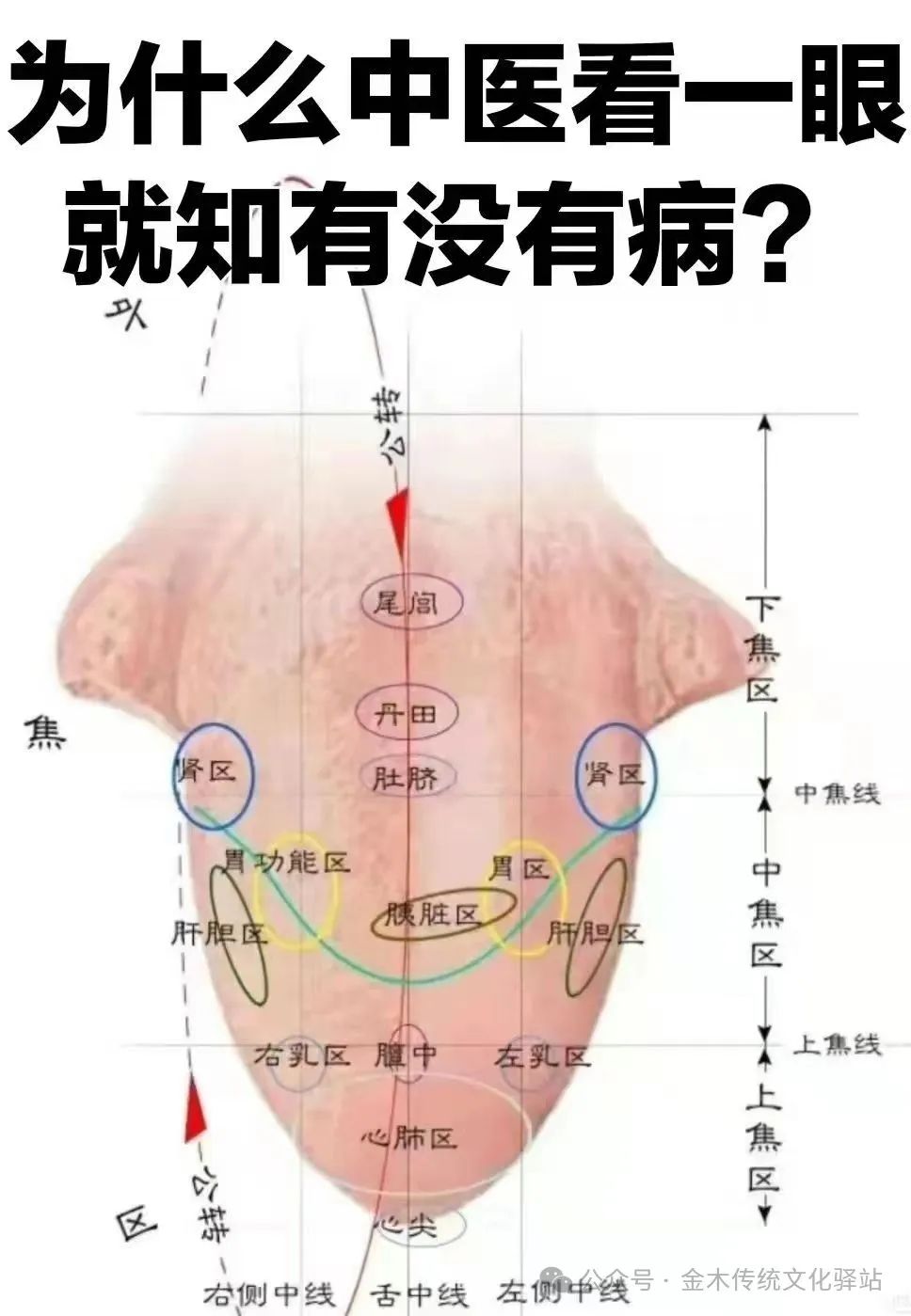
As previously mentioned, “the heart opens to the tongue“, meaning that the tongue is the organ through which the heart exchanges information with the outside world. Changes in heart function can be reflected through the tongue, which is why TCM refers to the tongue as “the external representative of the heart.” The term “representative” here means signs or indications.
Since the heart is the “ruler of the body” and governs various life activities, the tongue, as its “external representative,” can naturally reflect the overall state of life activities in the body.
Therefore, when the internal dynamic balance of the body is disrupted, leading to various disease symptoms, the tongue will also exhibit corresponding changes. By observing and analyzing these changes, we can obtain strong evidence of diseases, which is why TCM places great importance on tongue observation. To understand the relationship between the tongue and diseases, it is necessary to first understand the composition and structure of the tongue.
The tongue is attached to the floor of the mouth, the mandible, and the hyoid bone, having two surfaces: the upper surface is called the tongue dorsum (舌面, shé miàn), and the lower surface is called the tongue ventrum (舌底, shé dǐ). On the tongue dorsum, there is a thin and transparent mucous membrane, which has many small projections called lingual papillae.
Based on the shape of the lingual papillae, they can be classified into three types: filiform papillae (丝状乳头, sī zhuàng rǔ tóu), fungiform papillae (菌状乳头, jūn zhuàng rǔ tóu), and circumvallate papillae (轮廓乳头, lún kuò rǔ tóu). The first two types are distributed in the anterior part of the tongue, while the latter is located near the root of the tongue. The fungiform and circumvallate papillae contain taste buds (味蕾, wèi léi), which are the main sites for taste sensation in the human body.
In TCM, the tongue is divided into two main parts based on its visual characteristics: the tongue body (舌质, shé zhì) and the tongue coating (舌苔, shé tái). The tongue body, also known as the tongue substance, consists of muscle and vascular tissue, containing three directions of striated muscle and abundant blood. Under normal conditions, it appears light red and can move flexibly.
The tongue coating is the layer of coating on the tongue body, primarily composed of filiform papillae. Under normal conditions, it appears white, evenly distributed across the surface of the tongue, closely adhering to the tongue body, and cannot be scraped off. Through this coating, the light red tongue body can be faintly seen, so TCM describes a normal tongue appearance as “light red tongue with thin white coating” (淡红舌,薄白苔, dàn hóng shé, bó bái tái).
In disease states, both the tongue body and tongue coating undergo various changes. By observing the tongue body and tongue coating, one can determine the location and nature of the disease, providing a basis for diagnosis.
First, let’s look at the relationship between the tongue body and diseases. Similar to the previous observation methods, the observation of the tongue body focuses on four aspects: spirit, color, shape, and state.
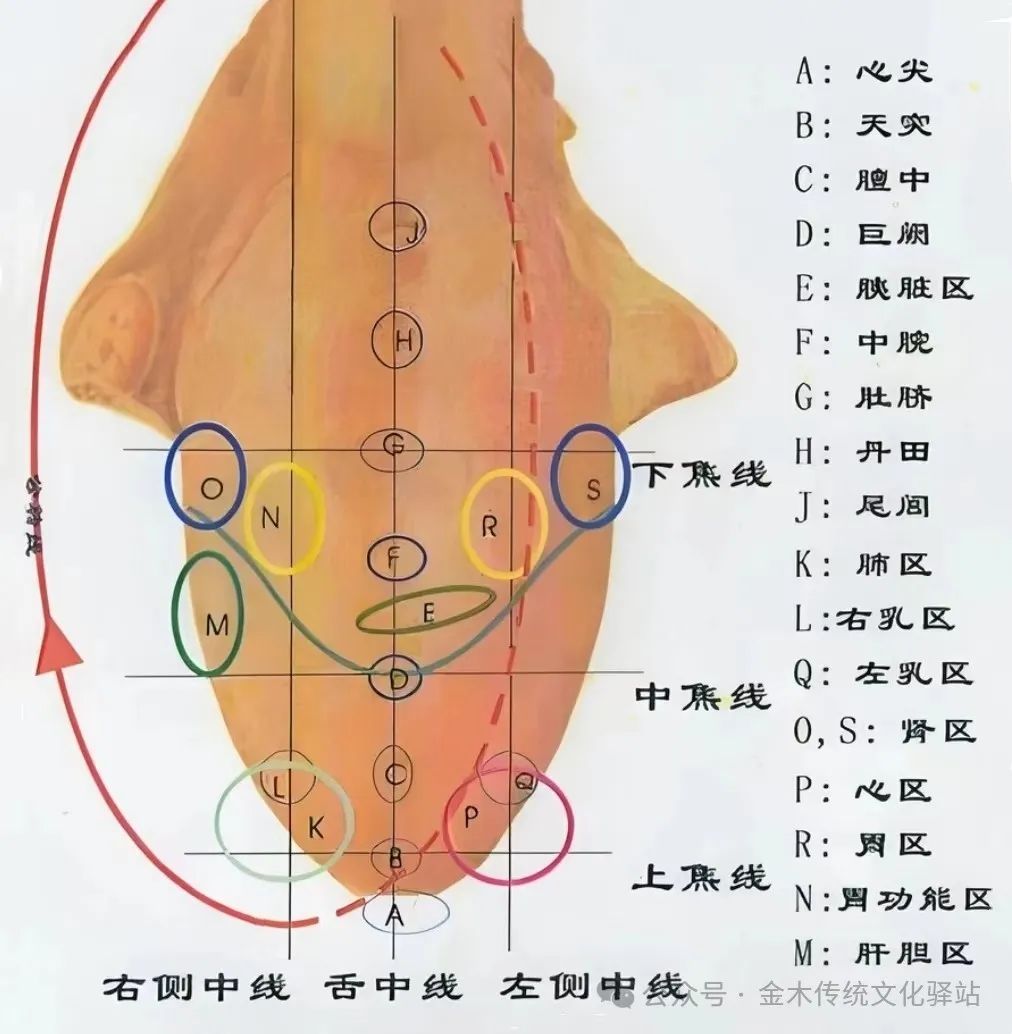
Spirit of the tongue (舌神, shé shén) refers to the overall appearance of the tongue observed, which is our first impression when looking at the tongue.
Generally, the spirit of the tongue includes two aspects:
One is vitality (荣, róng), which refers to the tongue being rosy, shiny, and vibrant, indicating a good spirit. This reflects sufficient vital energy (精气, jīng qì) in the organs and normal functioning, suggesting a mild disease that is easy to recover from;
the other is dullness (枯, kū), which refers to the tongue being dry, stiff, and lacking luster, indicating a lack of vital energy in the organs and functional decline, suggesting a severe disease that is difficult to recover from.
Two is mobility (灵动性, líng dòng xìng), if the tongue body moves freely and flexibly, it indicates vitality and represents a mild disease; if the tongue body is stiff, inflexible, or weak, it indicates a lack of vitality and represents a severe disease.
Through the spirit of the tongue, we can make a preliminary judgment about the nature of the disease and the condition of the organs. To gain a more detailed understanding of the disease, we need to carefully observe the color, shape, and state of the tongue body.
The color of the tongue body is mainly related to the rich blood supply it contains, which normally appears light red. Changes in the color of the tongue body are closely related to its arterial blood supply; insufficient blood supply can lead to a lighter color, while excessive blood supply can darken the color. Blood stasis can also cause the tongue body to appear darker and even blackish.
Now let’s look at some common types of changes in tongue body color and their clinical significance:
1. Pale white tongue (淡白舌, dàn bái shé)
The tongue body appears lighter than the normal light red, even lacking color, is called a pale white tongue. This condition is caused by insufficient arterial blood supply to the tongue, such as due to blood deficiency or low blood pressure.
As we discussed, the generation of qi and blood in the body mainly relies on the spleen’s transportation function, while the normal circulation of blood in the vessels is primarily driven by the body’s yang energy;
therefore, the appearance of a pale white tongue is commonly seen in two situations: one is spleen deficiency leading to insufficient qi and blood, or prolonged illness, severe illness, or excessive blood loss leading to excessive consumption of qi and blood; the other is weak yang energy, unable to promote blood circulation.
2. Red tongue (红舌, hóng shé)
A red tongue is deeper than light red, even appearing bright red. This condition is caused by excessive arterial congestion in the tongue, often due to accelerated blood circulation;
thus, a red tongue is commonly seen in various febrile diseases, such as internal heat or external heat pathogens.If we also consider the tongue coating, we can distinguish whether this heat condition is deficient heat (虚热, xū rè) or excess heat (实热, shí rè).
A red tongue with a thick yellow coating often indicates excess heat; a red tongue with little or no coating, or with cracks on the coating, often indicates deficient heat. This will be discussed in more detail below.
3. Scarlet tongue (绦舌, tāo shé)
A scarlet tongue is a deeper color than a red tongue, indicating a more severe heat condition. Like a red tongue, it can be caused by either excess heat or deficient heat, and we need to combine it with the tongue coating for differentiation.
4. Purple tongue (紫舌, zǐ shé)
A purple tongue has a red hue with a bluish tint. If the red component is more prominent, it often indicates internal heat, with blood being concentrated and stagnated due to heat evil, resulting in a scarlet purple tongue;
If the blue component is more prominent or the tongue is light purple and moist, it often indicates internal cold, with blood being congealed due to cold evil, resulting in a light purple tongue.
5. Blue tongue (青舌, qīng shé)
A blue tongue primarily indicates blood stasis and cold conditions. A blue tongue is a color that reflects blood stagnation in the tongue, resembling the “blue veins” that protrude on the skin during varicose veins, primarily dark blue and lacking red tones, resembling a water buffalo’s tongue, hence the name.
A blue tongue symbolizes internal cold and blood stasis; if the entire tongue is blue, it indicates an invasion of cold evil, stagnation of yang energy, and local blood coagulation, while blue on the sides of the tongue often indicates internal blood stasis.
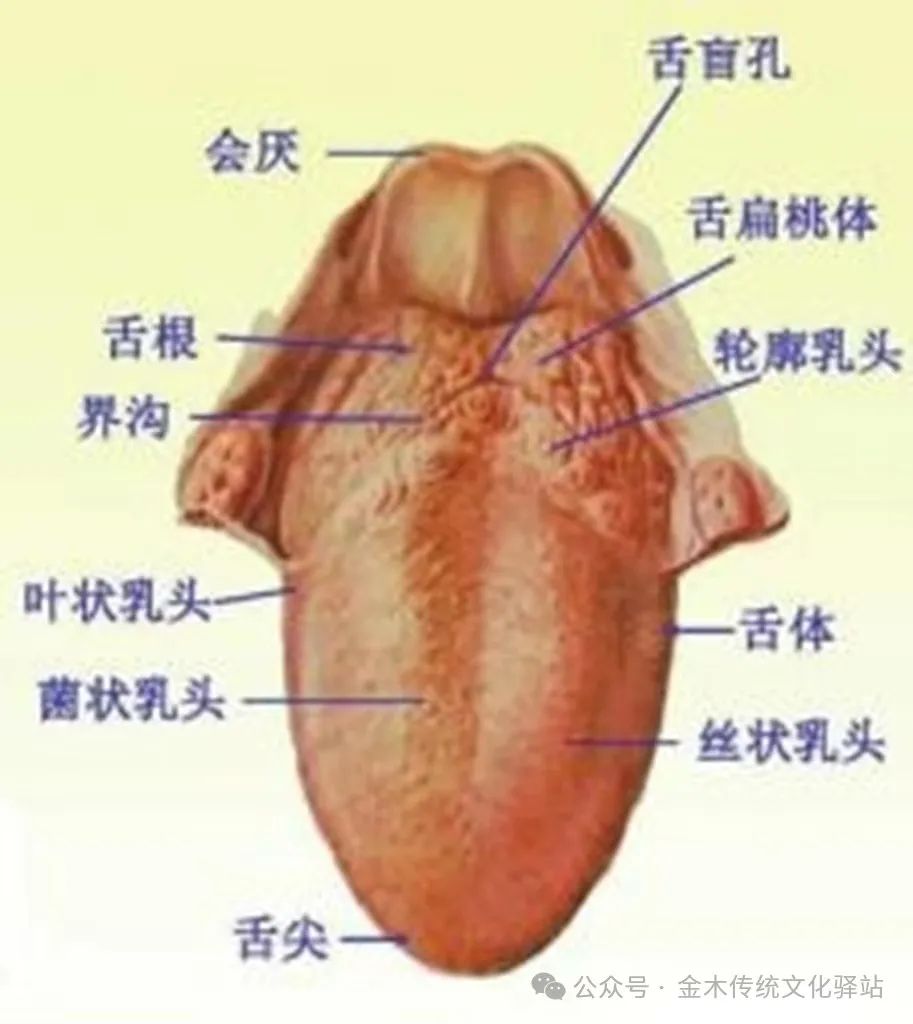
Through observing the tongue color, we can understand the internal conditions of cold and heat, as well as the smoothness of qi and blood circulation. By observing the tongue shape, we can understand the internal environment of the body.
1. Tongue shape (舌形, shé xíng)
Refers to the external shape of the tongue, commonly seen as fat or thin, old or young, swollen or shriveled, as well as some special pathological conditions.
2. Fat tongue (胖大舌, pàng dà shé)
The tongue body is larger than normal, extending to fill the mouth, appearing swollen with moisture, is called a fat tongue. Due to the enlargement of the tongue, the sides of the tongue often have teeth marks, which is also referred to as “teeth-marked tongue” (齿痕舌, chǐ hén shé).
Clearly, a fat tongue and teeth-marked tongue are caused by excessive moisture in the tongue body, which is due to excessive accumulation of water and dampness in the body. Therefore, the appearance of a fat tongue and teeth-marked tongue indicates a pathological phenomenon of water and dampness accumulation in the body.
3. Thin tongue (瘦薄舌, shòu bó shé)
The tongue body is smaller and thinner than normal, referred to as a thin tongue. In contrast to a fat tongue, a thin tongue is caused by deficiency of yin fluids or insufficient qi and blood, leading to an inability of the tongue body to be plump.
If the thin tongue is bright red, it indicates deficiency of yin fluids; if it is thin and pale, it indicates insufficient qi and blood.
4. Old tongue (老舌, lǎo shé)
The tongue body has rough texture, lacks moisture, and appears firm and old, referred to as an old tongue. In TCM, an old tongue generally represents a solid condition.
5. Tender tongue (嫩舌, nèn shé)
The tongue body has a delicate texture, is moist, and appears plump and tender, referred to as a tender tongue. In TCM, a tender tongue generally indicates a deficiency condition.
6. Cracked tongue (裂纹舌, liè wén shé)
The tongue surface has cracks of varying depths and shapes, referred to as a cracked tongue. Most often, this is due to diseases consuming the body’s qi, blood, and fluids, leading to an inability of the organs to nourish the tongue body, resulting in cracks. However, some normal individuals may also have a cracked tongue, so we cannot assume that a cracked tongue always indicates deficiency of vital energy; it is essential to consider the overall condition of the body.
7. Punctate tongue (点刺舌, diǎn cì shé)
“Punctate” refers to red, white, or black spots that protrude on the tongue surface; “刺” (cì) also known as “thorn,” refers to soft spikes or abnormal granules on the tongue surface that form sharp protrusions, resembling thorns. Punctate and thorn-like features commonly appear on the tip or sides of the tongue, often caused by various heat conditions.
8. Heavy tongue (重舌, zhòng shé)
“Heavy” refers to overlapping, indicating that the blood vessels under the tongue are swollen, resembling a small tongue growing beneath the original tongue, hence called a heavy tongue. If multiple blood vessels are swollen and overlapping, resembling a lotus flower, it is also referred to as a “lotus tongue” (莲花舌, lián huā shé).
Both heavy tongue and lotus tongue are formed by the swelling of blood vessels under the tongue. As previously mentioned, the heart governs blood vessels; if heart fire is strong, it can lead to excessive blood congestion and swelling, thus the main disease for heavy tongue and lotus tongue is excessive heart fire.
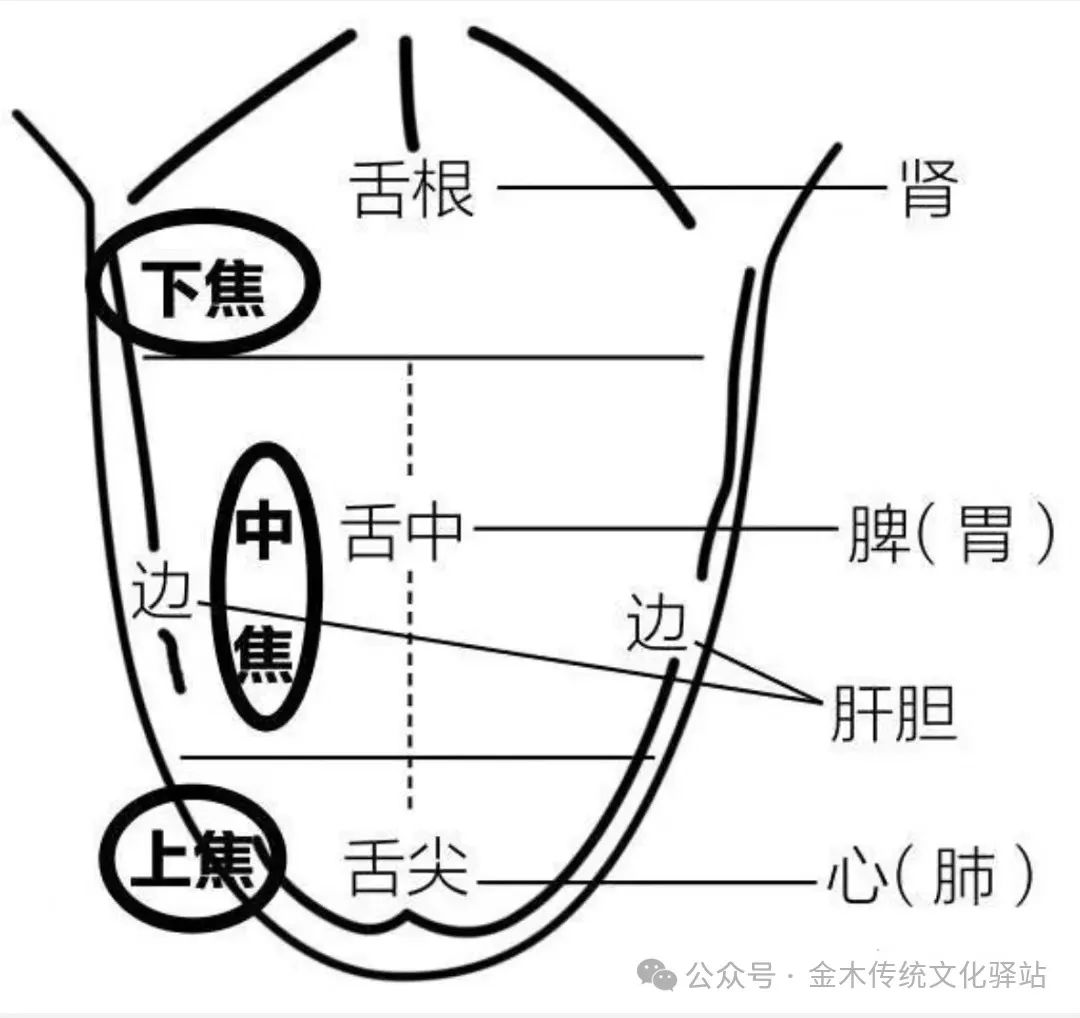
In addition to the common tongue shape changes mentioned above, many diseases of the tongue itself can also lead to changes in tongue shape, such as infections, ulcers, tumors, etc., which will exhibit different changes in tongue shape that need to be identified and judged based on their symptoms.
Tongue state (舌态, shé tài) refers to the dynamic state of the tongue. Abnormal tongue dynamics are often caused by neurological disorders. Common abnormalities in tongue state include stiffness, weakness, deviation, tremor, protrusion, shortening, elongation, and paralysis, which can be summarized into two categories:
One is hyperactivity of tongue motor function; the other is weakness or loss of tongue motor function. Hyperactivity of tongue motor function can lead to stiffness, tremor, protrusion, and shortening; while weakness or loss of motor function can lead to weakness, deviation, elongation, and paralysis.
Now let’s take a closer look at the characteristics of these tongue states:
1. Stiff tongue (僵硬舌, jiāng yìng shé)
The tongue body is stiff and straight, with limited movement, leading to difficulties in eating and speaking, also known as “stiff tongue” (舌强, shé qiáng). As mentioned in the section on “internal wind movement,” “all violent stiffness belongs to wind,” so “stiff tongue” in TCM is a manifestation of internal wind movement.
2. Weak tongue (萎软舌, wěi ruǎn shé)
The tongue body is weak and lacks the ability to move, referred to as a weak tongue. A weak tongue is caused by extreme deficiency of qi, blood, or yin fluids, leading to a lack of nourishment and moisture for the tongue body.
The movement of the tongue primarily relies on the tongue muscles, and the strength of the tongue muscles is closely related to the nutritional supply to the tongue. If the body is deficient in qi, blood, or yin fluids, the tongue muscles cannot receive sufficient nourishment, and naturally cannot function well, similar to how we feel weak and limp if we do not eat for several days.
3. Trembling tongue (颤动舌, zhàn dòng shé)
The tongue body trembles and shakes involuntarily, referred to as a trembling tongue, also known as “tongue battle” (舌战, shé zhàn). Trembling is a characteristic of “wind,” so a trembling tongue is also a major manifestation of internal wind.
4. Deviated tongue (歪斜舌, wāi xié shé)
The tongue body is tilted to one side, referred to as a deviated tongue, commonly seen in patients with cerebrovascular accidents (such as cerebral hemorrhage or cerebral infarction).
5. Protruding tongue (吐弄舌, tǔ nòng shé)
The tongue is often extended outside the mouth, called protruding tongue; if the tongue slightly protrudes and is immediately retracted, or licks around the lips continuously, it is called a licking tongue. When we eat spicy food or burn our tongue with hot water, we usually open our mouths wide and stick our tongues out to lower the temperature of the tongue surface and reduce discomfort.
The reason for protruding the tongue is similar; it is due to internal heat, causing the tongue to extend outside to obtain temporary cooling.Both protruding tongue and trembling tongue exhibit the characteristics of “wind” and are often seen in internal wind conditions.
6. Shortened tongue (短缩舌, duǎn suō shé)
The tongue body is contracted and cannot be extended, referred to as a shortened tongue. The natural property of objects is that they expand when heated and contract when cooled, so the shortening of the tongue is often caused by the invasion of cold evil.
7. Elongated tongue (弛纵舌, chí zòng shé)
Elongated tongue refers to the tongue body extending outside the mouth, with difficulty retracting or unable to retract, also known as “tongue elongation” (舌纵, shé zòng). Since cold causes contraction, the reason for an elongated tongue is naturally heat; thus, an elongated tongue is often caused by internal heat. If accompanied by weakness, it often indicates deficiency of qi and blood.
8. Paralyzed tongue (舌麻痹, shé má bì)
Paralysis refers to numbness and stiffness. A paralyzed tongue is characterized by a lack of flexibility in movement, accompanied by a numb sensation. If numbness predominates over stiffness, it is often due to insufficient qi and blood, leading to a lack of nourishment for the tongue body; if stiffness predominates over numbness, it is often caused by internal wind movement.
Diseases affect the body not only by reflecting on the spirit, color, shape, and state of the tongue body but also by causing various changes in the tongue coating. To understand the significance of the tongue coating in disease diagnosis, we first need to understand how the tongue coating forms.
The formation of the tongue coating is closely related to the functions of the spleen and stomach. In TCM, the tongue coating is a manifestation of the essence of food and drink (the refined substances formed after digestion by the spleen and stomach) rising to the tongue. Under normal conditions, the coating is neither thick nor dense, allowing the light red tongue body to be faintly visible beneath it, appearing pale white.
In disease states, various external or internal pathogenic factors can affect the rise of the spleen and stomach essence, leading to various changes in the tongue coating. These changes can be categorized into two types: changes in color and changes in texture.
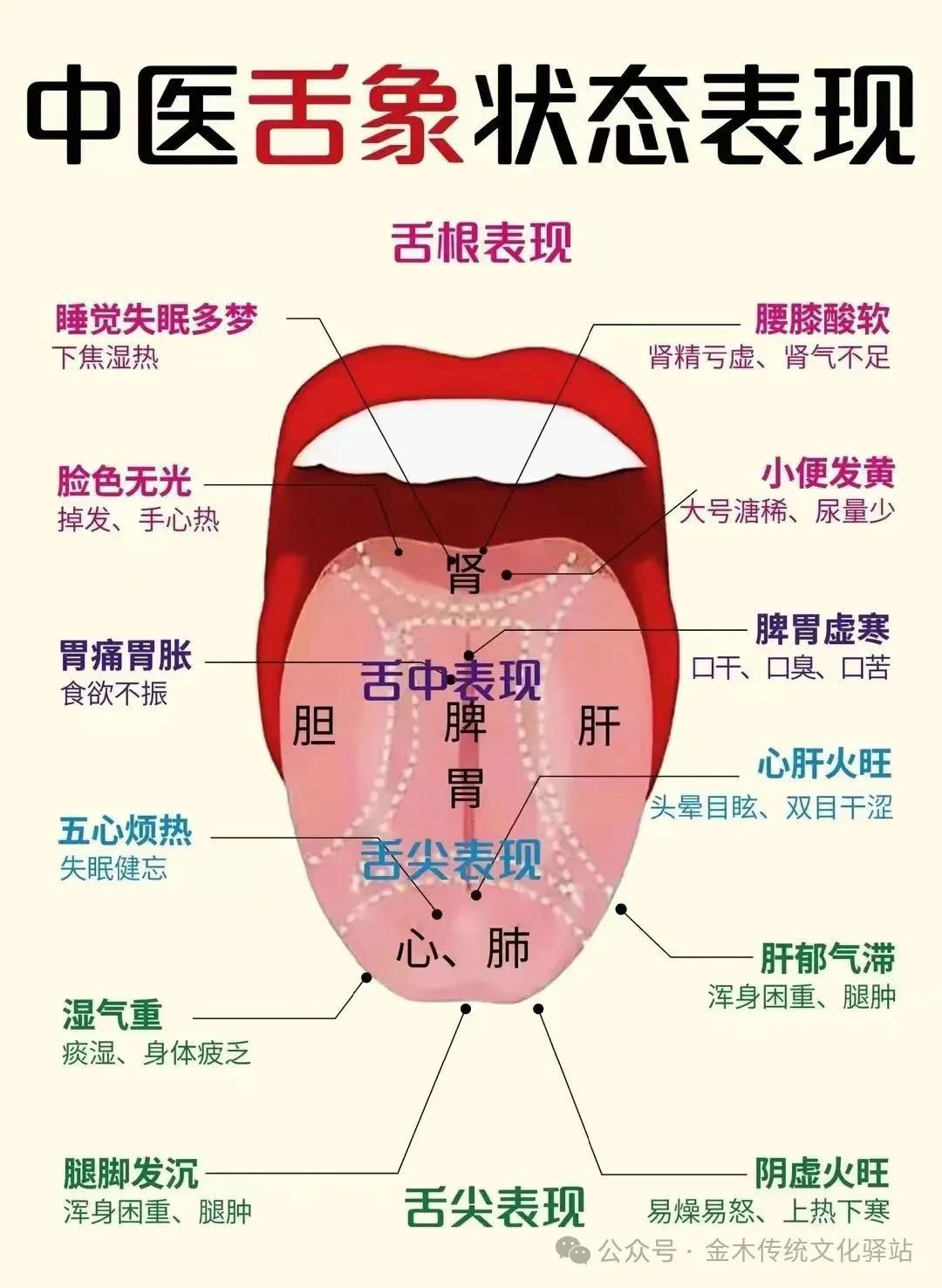
First, let’s look at changes in color. The color changes of the tongue coating are often related to heat. Why is this the case? We can explain this with an analogy of the food digestion process. When rice and water are heated in a pot, under appropriate conditions, the raw rice cooks into rice. When the rice is cooked, it appears a crystalline white color; if heated further, the rice gradually turns yellow and eventually becomes blackened.
The spleen and stomach are the main organs for digesting food and drink in the body. Water and food mix in the stomach (like the pot for cooking), and through the spleen’s transportation and the stomach’s rotting and ripening (like the fire beneath the pot), food is transformed into the essence of food and drink (like cooked rice), which rises to the tongue surface, showing a thin white and moist color.
If the essence of food and drink is subjected to internal or external heat, it can lead to changes in the tongue coating color to yellow, gray, or black (similar to how cooked rice turns black when overcooked). Since pathogenic heat consumes the body’s fluids, changes in the tongue coating color are often accompanied by dryness, roughness, and lack of moisture.
In addition to pathogenic heat, another factor that can cause the tongue coating to appear gray or black is related to the previous discussion on color and the five elements. Can anyone guess what it is? It is water.
Black is the pathological color of water, which has cold and yin characteristics. Therefore, when internal heat and cold are excessive, or when water and dampness accumulate, the tongue coating can also appear gray or black.
Since both heat and cold can lead to gray or black changes in the tongue coating, how can we differentiate between them?
Since heat and cold are completely opposite pathogenic factors, we can differentiate them based on the texture of the tongue coating. Gray or black coatings caused by pathogenic heat are necessarily dry and lack moisture, while gray or black coatings caused by cold are moist and watery.
This example also shows that in addition to the color of the tongue coating, the texture of the tongue coating and the nature of the disease are closely related. Only by studying the changes in both the texture and color of the tongue coating can we gain a complete and comprehensive understanding of the nature of the disease. Now let’s explore the relationship between the texture of the tongue coating and diseases.
The texture of the tongue coating, in addition to the previously mentioned moisture and dryness, also includes thickness, greasiness, and peeling. By observing these changes, we can understand the depth of pathogenic factors and the strength of stomach qi.
The moisture and dryness of the tongue coating primarily reflect the status of the body’s fluids. A moist tongue coating indicates sufficient body fluids; a dry tongue coating indicates fluid deficiency.
Depending on the degree of fluid deficiency, the dryness of the tongue coating can vary, resulting in different textures. If the fluids are mildly deficient, the tongue coating appears dry, looking withered and lacking moisture, which in TCM is referred to as “dry coating” (燥苔, zào tái). If the fluids are moderately deficient, the tongue coating appears dry and rough like sand, which in TCM is referred to as “rough coating” (糙苔, cāo tái).
If the fluids are severely deficient, the tongue coating becomes dry and hard, with cracks, resembling cracked land after a drought; this type of tongue coating is referred to as “dry cracked coating” (燥裂苔, zào liè tái). If the tongue is overly moist, the tongue coating appears slippery and greasy, even drooling, indicating excessive water and dampness in the body; this type of tongue coating is referred to as “slippery coating” (滑苔, huá tái).
In addition to the moisture level of the tongue coating, the thickness of the tongue coating also plays a significant role in understanding the nature of diseases.
The thickness of the tongue coating primarily reflects the amount of turbid substances in the body. A normal tongue coating is a thin white layer formed by the essence of food and drink rising to the tongue surface, allowing the light red tongue body to be faintly visible beneath it.
When the disease is mild and superficial, not affecting the spleen and stomach’s digestion of food, the tongue coating is often thin. However, when the disease weakens the spleen and stomach’s ability to transform and ripen food, leading to abnormal accumulation of turbid substances, these turbid substances rise to the tongue surface, causing the coating to thicken.
As mentioned earlier, we often experience this in daily life; when we have indigestion, we often find that the tongue coating becomes thicker, which is why thick coating in TCM is often a sign of food stagnation or water and dampness not being transformed.
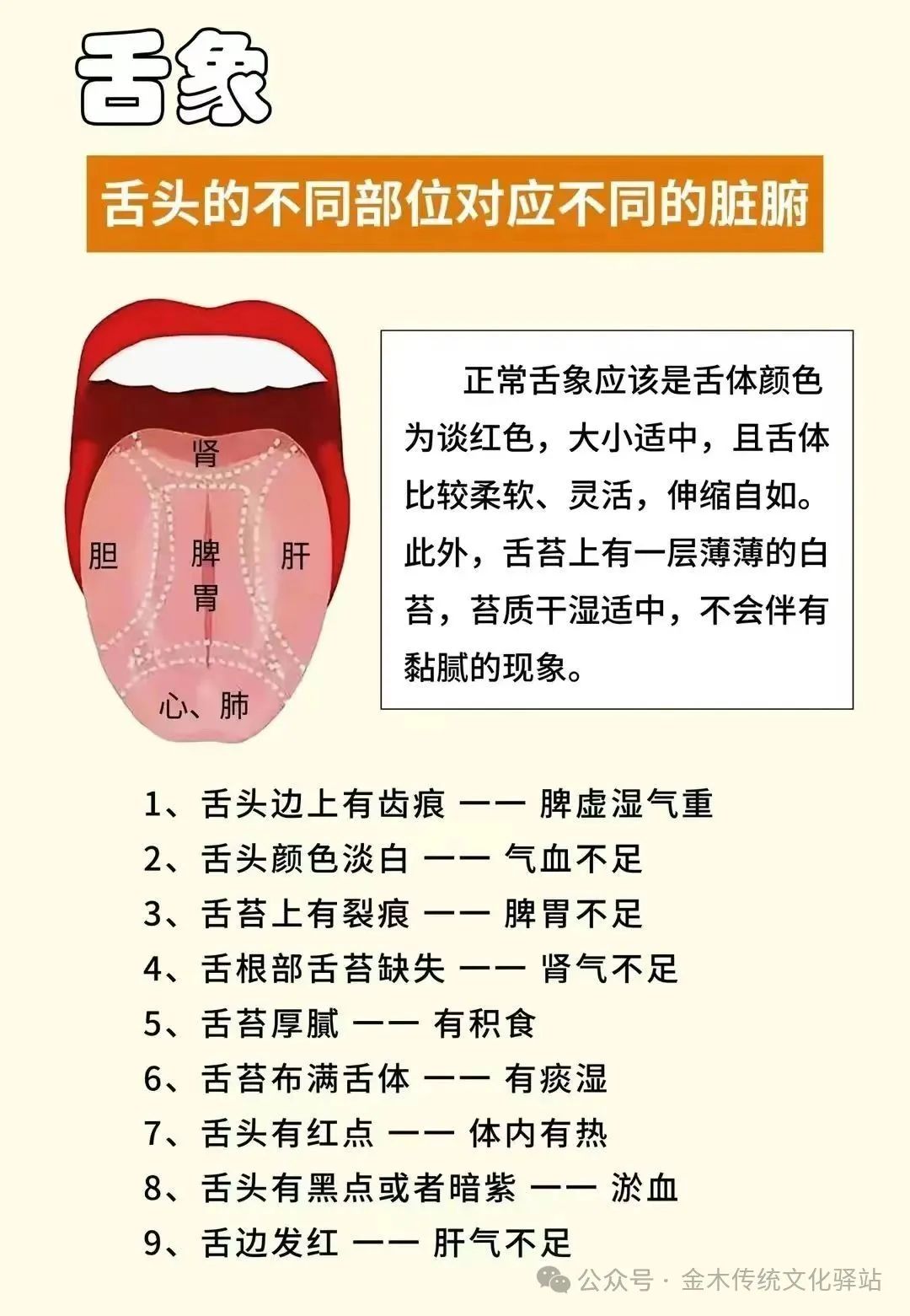
How do we determine whether the tongue coating is thick? How do we distinguish it from normal thin white coating?
The standard for distinguishing thick coating from thin coating is whether we can “see the bottom”. “Seeing the bottom” means that we can faintly see the tongue beneath the coating. If we cannot see the tongue body beneath the coating, we refer to it as thick coating. Thick coating can be further classified based on the coarseness of the particles and the fineness of the texture into rotten and greasy types.
Thick coating with coarse and loose particles, resembling tofu dregs piled on the tongue surface, which can be scraped off, is referred to as “rotten coating” (腐苔, fǔ tái); if the thick coating has fine and dense particles, cannot be scraped off, and is covered with a layer of greasy liquid, it is referred to as “greasy coating” (腻苔, nì tái).
1. Rotten coating (腐苔, fǔ tái)
This primarily reflects the accumulation of turbid substances (such as undigested food, pus, etc.) on the tongue surface, while greasy coating reflects excessive water and dampness in the body.
Finally, let’s look at the peeling of the tongue coating. If the tongue coating is completely or partially absent, revealing a smooth tongue body, this condition is referred to as peeling of the tongue coating. Depending on the extent of the peeling, TCM has different names.
If the tongue coating completely disappears, leaving the tongue surface looking smooth like a mirror, it is called “mirror tongue” (镜面舌, jìng miàn shé), also known as “glossy tongue” (光剥舌, guāng bō shé); if the tongue coating is partially peeled, with smooth areas without coating and other areas still retaining coating, forming a red and white “flower” pattern, this type of tongue coating is referred to as “flower peeling coating” (花剥苔, huā bō tái).
As mentioned earlier, a normal tongue coating is a manifestation of the body’s essence of food and drink on the tongue surface, and the formation of this essence relies on the spleen and stomach’s ability to transform and ripen food. Therefore, peeling of the tongue coating symbolizes damage to the spleen and stomach’s essence, indicating that the essence of food and drink cannot rise to the tongue surface.
Especially “mirror tongue” is a sign of extreme depletion of the spleen and stomach’s essence, indicating a severe or critical condition that requires special attention.
By combining the color and texture of the tongue coating, we can more comprehensively assess the nature of the disease, whether it is cold or heat, and the depth of pathogenic factors. Common types include:
2. Thin white coating (薄白苔, bó bái tái)
This is a normal type of tongue coating. If the disease is mild and does not affect the normal function of the spleen and stomach, and there is no accumulation of turbid substances in the body, it often presents as this type of coating.
3. White thick coating (白厚苔, bái hòu tái) or white rotten coating (白腐苔, bái fǔ tái)
Both rotten coating and thick coating reflect the accumulation of turbid substances (such as undigested food) on the tongue surface, while white indicates the absence of heat or the presence of internal cold. Therefore, white thick coating or white rotten coating reflects the body’s yang energy being weak, with water and dampness stagnating or food stagnating.
4. Yellow greasy coating (黄腻苔, huáng nì tái)
Yellow reflects heat, while greasy symbolizes dampness. Therefore, yellow greasy coating indicates a condition known as “damp-heat” (湿热, shī rè). The formation of damp-heat is often closely related to the functions of the spleen and stomach and the composition of the diet.
With improved living conditions, the intake of high-fat and high-protein foods has increased. Excessive consumption of these foods can affect the normal functions of the spleen and stomach, leading to the accumulation of undigested turbid substances—phlegm and dampness.
When phlegm and dampness accumulate for a long time, they can ferment and generate heat, similar to how a pile of garbage, if not dealt with for a long time, will ferment and produce heat. This combined state of dampness and heat is referred to as “damp-heat.” Since phlegm and dampness are also major causes of obesity, yellow greasy coating is more common among overweight individuals.
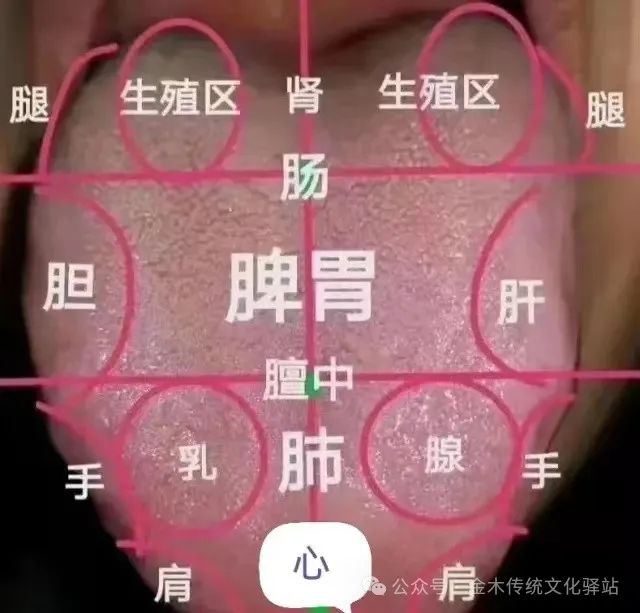
5. Thin yellow coating (薄黄苔, bó huáng tái)
The coating appears yellow, while the texture remains thin. Yellow indicates heat, while thin coating suggests that the pathogenic factors are superficial and have not affected the spleen and stomach, indicating that there are no turbid substances accumulating in the body. Therefore, thin yellow coating often reflects heat on the surface (such as fever from a cold, soft tissue infections, etc.).
The changes in the color and texture of the tongue coating are important indicators for assessing the nature of diseases, the strength of the spleen and stomach’s essence, and the amount of turbid substances in the body.
However, when observing the tongue coating, it is essential to ensure that the coating used as a basis for judgment truly reflects the disease. What does this mean? Can the tongue coating be faked?
Yes, there can be false coatings. Consuming certain foods or medications containing pigments or special textures can lead to changes in the color and texture of the tongue coating, creating various illusions. This type of coating is referred to as “dyed coating” (染苔, rǎn tái).
For example, drinking milk or newborns sucking breast milk can create a false appearance similar to white coating; consuming peanuts, sunflower seeds, almonds, or soybeans can leave white residues on the tongue surface, resembling rotten coating; drinking coffee, grape juice, wine, or various iron-containing supplements can dye the tongue coating blackish-brown; consuming egg yolks, vitamin B2, persimmons, oranges, or colored candies can dye the tongue coating yellow; and taking medications containing cinnabar can dye the tongue coating red.
If we use these dyed coatings as a basis for disease diagnosis, we would make significant errors, as dyed coatings are merely the influence of external pigments on the tongue coating, not a reflection of disease.
In addition to the changes in color and texture of the tongue coating reflecting the nature and depth of diseases, the location of the tongue coating on the tongue surface also holds significant diagnostic importance.
In TCM, the tongue is divided into three parts: the tip, the middle, and the root, corresponding to the three burners of the body. The tip corresponds to the upper burner, the middle corresponds to the middle burner, and the root corresponds to the lower burner. Abnormal tongue coatings in different areas reflect diseases in different parts of the body.
For example, if the middle of the tongue has a greasy coating, it indicates that water and dampness are stagnating in the middle burner (such as the spleen and stomach); if the root of the tongue has a greasy coating, it indicates that water and dampness are stagnating in the lower burner (such as the bladder and kidneys), etc.
Since the five organs correspond to the three burners, we can also associate the five organs with different parts of the tongue. For instance, the heart and lungs belong to the upper burner, so changes in the tip of the tongue can reflect the condition of the heart and lungs; the spleen and stomach belong to the middle burner, so changes in the middle of the tongue can reflect the condition of the spleen and stomach; the kidneys and bladder belong to the lower burner, so changes in the root of the tongue can reflect the condition of the kidneys and bladder, etc.
By understanding the correspondence between the five organs and different parts of the tongue, we can assess the disease status of the five organs based on the changes in the tongue body and tongue coating, providing another basis for disease diagnosis.
Disseminating knowledge of TCM health preservation, promoting traditional Chinese culture,sharing health concepts, and conveying care, passing health knowledge and traditional culture to more friends…
People are great because of their dreams; we are unique because of our love.
Liú Lìngníng: 182 7127 1941 or (WeChat ID)
Yáng Shùn sōng: 138 7171 7447 or (WeChat ID)


